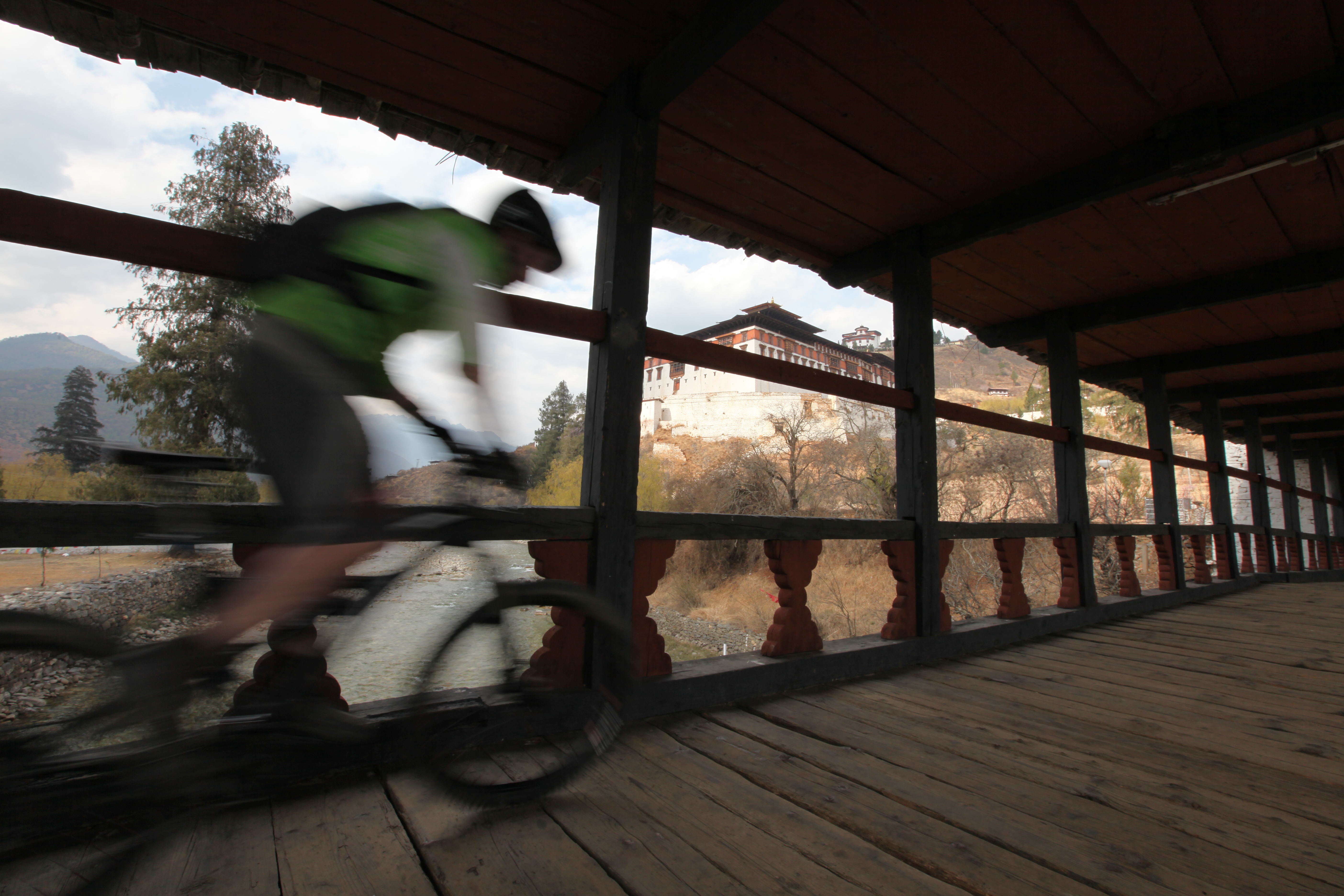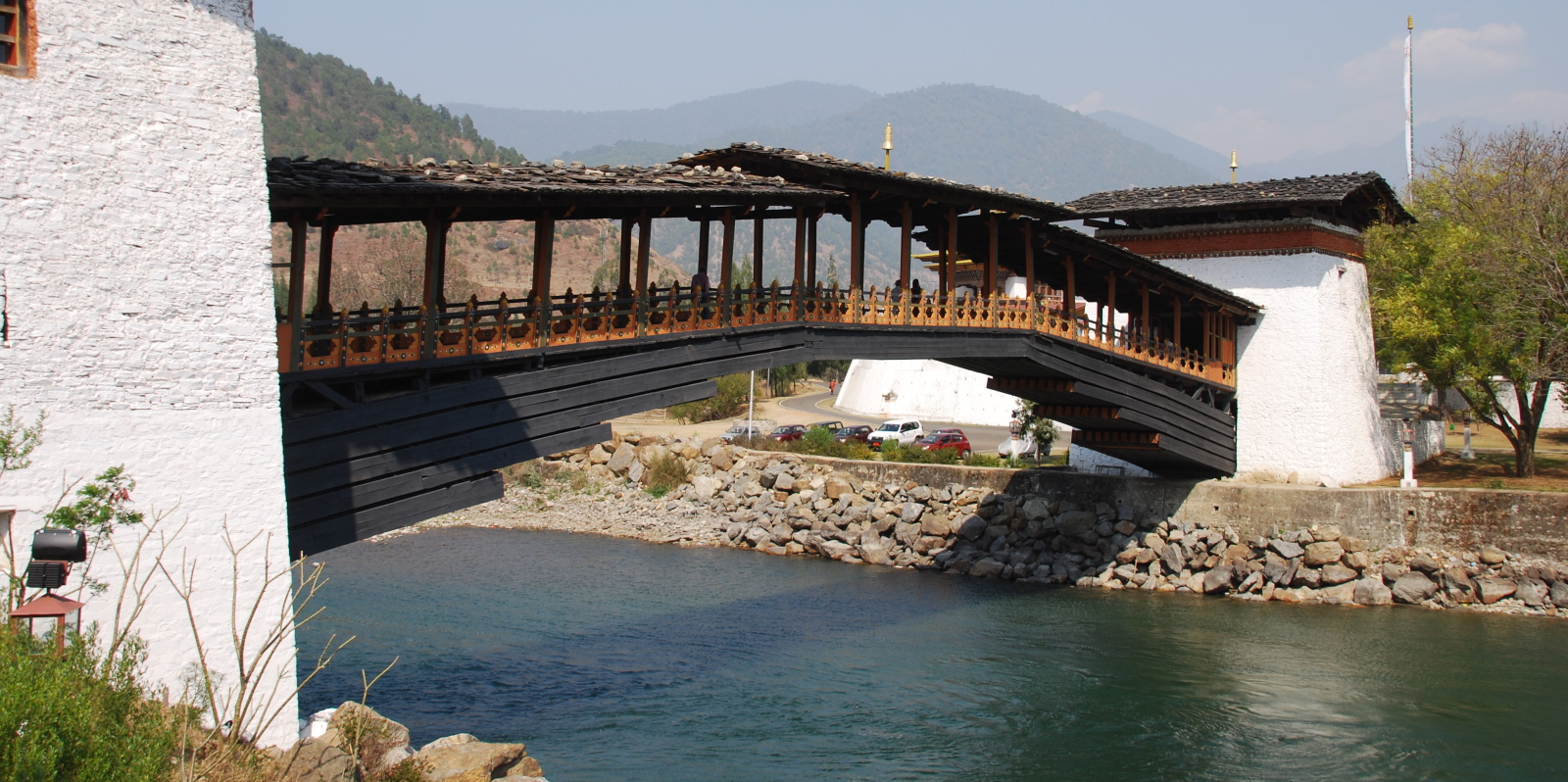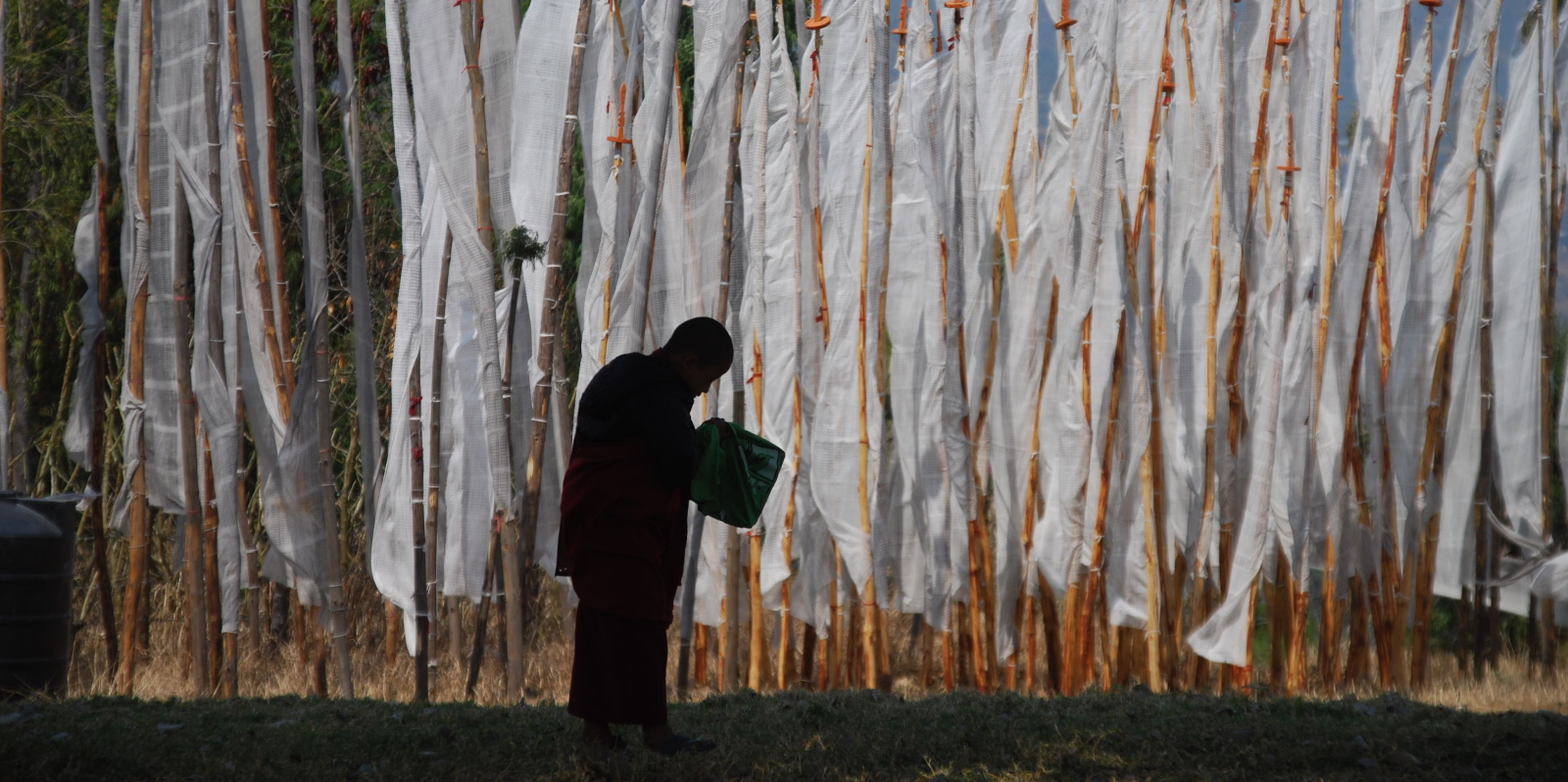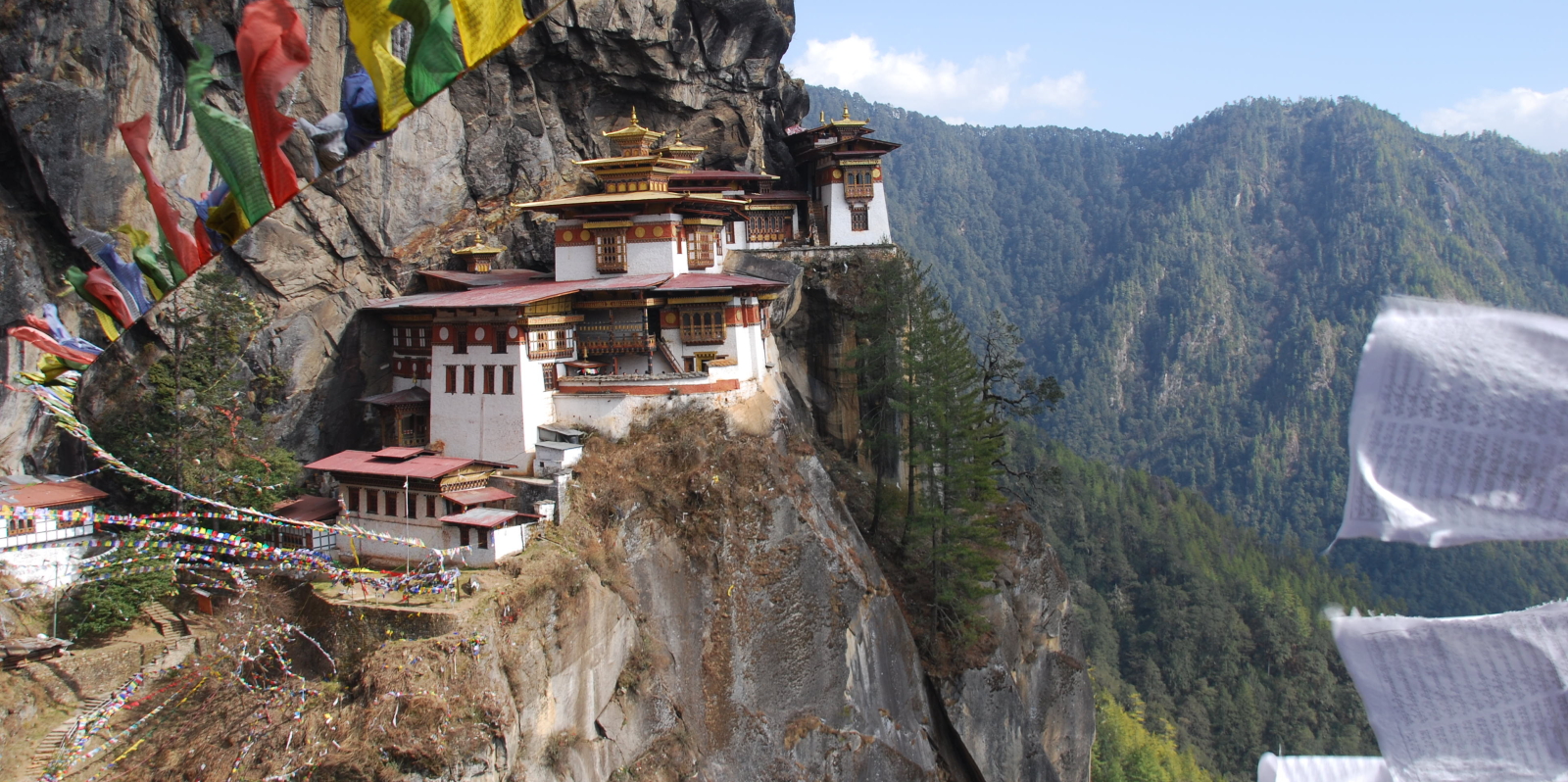Your spectacular flight into Bhutan is a great introduction to this beautiful Buddhist Kingdom, also known as Druk Yul, the Land of the Thunder Dragon. You have breathtaking views of many Himalayan peaks, including the sacred Jhomolhari and Mt Jichu Drake in Bhutan and Mt Kanchenjunga, the 3rd highest mountain in the world, on the Sikkim-Nepal border.
After such a stunning welcome, your Bhutan tour allows you to explore a truly unique culture, see the stunning traditional architecture, clothing and crafts, the famously spicy food and of course to learn about Bhutan’s incredibly rich Buddhist heritage! All of this, set in the beautiful Bhutanese landscape with its high mountains, lush forests and picturesque terraced fields.
Bhutanese food is spicy and varied, and has strong Tibetan and Indian influences. Most meals are served buffet style and consist of several dishes. Traditional Bhutanese food always features chillies, and one dish called emadatsi, actually uses hot green chillies as the vegetable rather than seasoning!
Geography
The Kingdom of Bhutan lies towards the eastern extreme of the Himalayan Range, between the Tibet Autonomous Region to the north and India to the south, southwest and east. Other neighbours include Nepal to the west, Bangladesh to the south, both separated by small stretches of Indian territory. Bhutan is a very compact, landlocked nation, with just a small bit more length than width and a size of approximate 46,500 square kilometres.
The Himalayas dominate the north of the country, where many mountain peaks reach seven thousand metres. Further south, the highlands are the most populous part of the nation, with the capital of Thimphu lying in the western highlands. This region is characterized by its many rivers, the isolated river valleys that house most of the population, and the expansive forests that cover seventy percent of the nation. The extreme southern strip of the nation consists mostly of tropical plains, more typical of India. It is largely agricultural land, producing mostly rice. Only two percent of Bhutan is arable land, with most of it found in this southern strip.
Weather
Bhutan has five distinct seasons: summer, monsoon, autumn, winter and spring. Bhutan's generally dry spring starts in early March and lasts until mid-April.
Summer weather commences in mid-April with occasional showers and continues through the premonsoon rains of late June. The summer monsoon lasts from late June through late September with heavy rains from the southwest. Autumn, from late September or early October to late November, follows the rainy season. It is characterized by bright, sunny days and some early snowfalls at higher elevations. From mid November until mid March, winter sets in, with dry weather and frosts throughout much of the country and snowfall common above elevations of 3,000 metres. The winter northeast monsoon brings gale-force winds down through high mountain passes, giving Bhutan its name - Drukyul, which in the Dzongkha language means Land of the Thunder Dragon.
The climate in Bhutan varies with altitude, from subtropical to a polar-type climate! The southern part of Bhutan is tropical, and in general, the east of Bhutan is warmer than the west of the country. The central valley of Punakha, Wangduephodrang, Mongar, Trashigang and Lhuntse enjoy a semi tropical climate with very cool winters, while Thimphu, Trongsa and Bumthang have a much harsher climate, with heavy monsoon rains in the summer and heavy snow fall in winter.
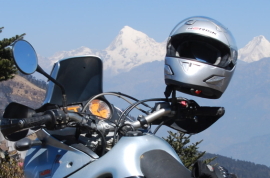
Bhutan… the name echoes with all the mystery of an ancient Buddhist Kingdom, so isolated for so long that it has developed its own truly unique forms of culture, architecture, food and clothing styles.
Details
Book/Ask
8 days From $2280
Motorcycling


